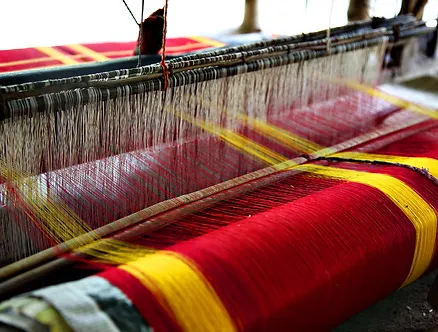Handloom and Handicrafts Training

The Handlooms and Handicrafts gives India its distinct cultural identity and contributes considerably to economic activities in India. Dominant in the rural areas of the country Handlooms and Handicraft sectors are labour-intensive as the products are usually handmade made with or using simple handheld tools. The sector caters to several lifestyle and utility products, including house ware, decorative items, furniture, candles, incense sticks, fashion jewellery and accessories.
Traditional skills and eco-friendly methods used for production add to the products’ uniqueness. This sector largely comprises people who are self employed and have been in this profession for generations. The demand for Handlooms and Handicraft in India comes from three major segments – household sector, nonhousehold sector (institutional, industrial and technical) and export sector, and all the three segments are growing.
Handlooms
The demand for Handlooms and Handicraft products in India is very large and growing at an increasing rate in tandem with the increase in disposable income of the people. A very high proportion of young and working population is a favourable factor in influencing the domestic demand. However, the sectors are still highly unorganised, as a majority of production activities are conducted in the houses of the artisan/weaver. This affects their productivity owing to lack of economies of scale and the feasibility to adopt innovative techniques. Thus, the revival of the sector requires, movement to more organised production facilities, besides realignment to the market requirements. Also, without marketing and financial management skills, artisans cannot cater to the segment and earn a sustainable living from the craft.

Handlooms and Handicrafts require relatively low capital investment, as raw material and labour are easily available in India. However, the government’s support to this sector has not been sufficient as artisans across the country continue to face challenges in terms of raw-material availability at reasonable rates, the scale of economies, marketing and distribution, among others. Handlooms sector contributes nearly 11 percent of the total cloth produced in the Country.
Thus Handloom and Handicrafts has a good place and rolled in the ecoomy of the State and the country.

